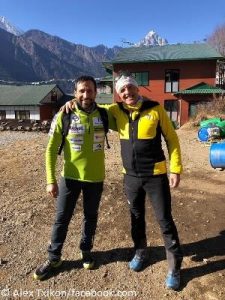Himalayan Database soon for free
The Himalayan Database is something like the electronic “Bible of Expedition Mountaineering in Nepal”. For those who are dealing with the highest mountains in the world, there is simply no way around this extensive collection of data. Countless times I’ve asked for Billi Bierling when I wanted to check important details of ascents. The 50-year-old German journalist and climber has been working for the Himalayan Database since 2004. In 2016 she replaced the legendary chronicler Elizabeth Hawley, who is now 93 years old, as the head of the database. In the 1960s Miss Hawley had begun to file the expeditions in Nepal. Her archive was the base of the Himalayan Database, which has been available electronically since 2004. Till now a CD ROM had to be bought. This will change soon. Then the database will be available to everyone for free.
Huge collection of data
At the beginning of November the new version can be downloaded from the website himalayandatabase.com without charge, Bierling and Co. inform on Facebook. More than 450 mountains are listed in the Himalayan Database. More than 9,500 expeditions with about 70,000 members have been recorded so far, including routes, camps, specific incidents and details such as the question of whether the mountaineers used bottled oxygen. Billi and her team – the Nepalese Jeevan Shrestha, the Frenchman Rodolphe Popier and the German Tobias Pantel – regularly interview the expedition teams on their arrival in and departure from Kathmandu. Afterwards the American Richard Salisbury – he was the one who convinced Miss Hawley in the 1990s that it would be a good idea to digitalize her archive – adds the new data.
Hardly manageable
The amount has increased rapidly in the past 13 years since the first digital version. So many expeditions are now en route in Nepal, that it is hardly possible to cover them all. During the peak period, Billi Bierling is doing ten to fifteen interviews a day, which can last only ten minutes, but also up to two hours. Billi and her colleagues want to continue Miss Hawley’s work as long as possible. “We will have to see whether we still remain a database or in the future will possibly record only special ascents,” Billi told me a few months ago. Since last spring, climbers can also fill in their questionnaires online, e.g. via Facebook. With the upcoming free version, the Himalayan Database takes a further step into the future. I contacted Billi Bierling.
Billi, what do you expect from making the database available free of charge in the future?
The fact that the Himalayan Database is now available online for download makes it, of course, more available for many people. I think it will be now easier to communicate to the trekking agents, mountaineers as well as the expedition leaders what exactly we are doing. It is a great wealth of information – no matter if you just want to know how many people have been so far on Mount Everest or Annapurna I or if you want to plan a climbing route. The Himalayan Database answers all these questions. I also believe that so far some of the trekking agencies in Nepal actually don’t know what we are doing, and the fact that the database is now available online is a great opportunity for us to show them how they can use these data too.
How will you provide the financing of Himalayan Database?
We will continue to a great extent unpaid (the money they made with the CD ROM version was literally used for producing the data carrieres and the booklets). And the future of the Himalayan Database is still written in the stars. Our team, however, consists of people who want to – and hopefully will – continue the work of Miss Elizabeth Hawley with all their heart and soul. And if we have left a bit of money, they will get, of course, a small allowance. But we are still working by conviction.









